News
https://www.wnct.com/on-your-side/health-watch/9oys-exclusive-look-inside-ecu-brody-school-of-medicines-covid-sequencing-lab/
The BIG Core has AlphaFold2, an artificial intelligence program, installed and provides the service of protein 3-D structure prediction to the research community.
In June 2023, the BIG Core sequenced 140 COVID-19 specimens and obtained 121 SARS-CoV-2 nearly complete genomes, successfully finished the 2-year CORVASEQ project.
In summary of COVASEQ project in ECU, from June 2021 to June 2023, the BIG Core sequenced a total of 20,694 COVID-19-positive specimens, obtained 19,747 SARS-CoV-2 nearly complete genomes, and submitted to GISAID.
In 2022, the BIG Core sequenced 10,080 COVID-19 specimens, obtained 9,836 (97.6%) SARS-CoV-2 genomes, the majority of which were Omicron variants. We observed Omicron virus changing from BA.1/BA.2 at the beginning of the year, BA.4/BA.5 at mid-year, to BQ.1 at the end of the year in eastern North Carolina. We also detected other subvariants, e.g., BA.2.75 and XBB.1.5, appearing in the region in December, which have been found to evade immunity.
In 2021, the BIG Core sequenced 8,479 COVID-19 specimens, obtained 7,828 (92.3%) SARS-CoV-2 genomes, identified 6,306 (80.5%) variants of concern (VOC) and 370 (4.7%) variants of interest (VOI). We observed the rising of Delta virus in eastern North Carolina in June and July, and 100% of specimens collected and sequenced belonged to Delta between September and November. We also detected Omicron variant appearing in the region in early December and spreading rapidly.
In 2021, the BIG Core also helped on SARS-CoV-2 weekly surveillance of dormitory wastewater and conducted more than 1,000 tests in total; on SARS-CoV-2 daily surveillance of students’ saliva on the ECU campus and conducted more than 16,000 tests in total.
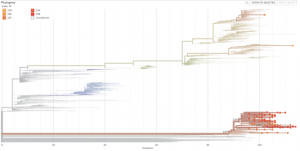
Figure Caption: Phylogeny tree of 121 SARS-CoV2 strains sequenced in June 2023.
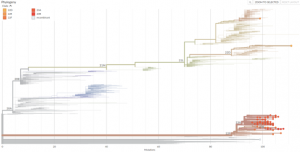
Figure Caption: Phylogeny tree of 89 SARS-CoV2 strains sequenced in May 2023, with XBB.1.5 and XBB.1.16 subvariants shown in eastern North Carolina region.

Figure Caption: Phylogeny tree of 168 SARS-CoV2 strains sequenced in April 2023, with XBB.1.16 subvariants appeared in eastern North Carolina region.

Figure Caption: Phylogeny tree of 379 SARS-CoV2 strains sequenced in March 2023, with XBB.1.5 subvariants still dominating in eastern North Carolina region.
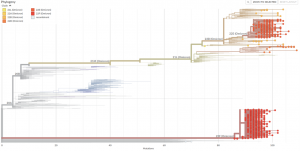 Figure Caption: Phylogeny tree of 762 SARS-CoV2 strains sequenced in February 2023, with XBB.1.5 subvariants dominating in eastern North Carolina region.
Figure Caption: Phylogeny tree of 762 SARS-CoV2 strains sequenced in February 2023, with XBB.1.5 subvariants dominating in eastern North Carolina region.

Figure Caption: Phylogeny tree of 564 SARS-CoV2 strains sequenced in January 2023, including Omicron BQ.1 and XBB.1.5 subvariants in eastern North Carolina region.

Figure Caption: Phylogeny tree of 479 SARS-CoV2 strains sequenced in December 2022, including Omicron BQ.1 and XBB subvariants in eastern North Carolina region.

Figure Caption: Phylogeny tree of 474 SARS-CoV2 strains sequenced in November 2022, including Omicron XBB, BQ.1, and CP.1 subvariants in eastern North Carolina region.

Figure Caption: Phylogeny tree of 472 SARS-CoV2 strains sequenced in October 2022, including BA.2.75.2, XBB and BQ.1 Omicron subvariants in eastern North Carolina region.
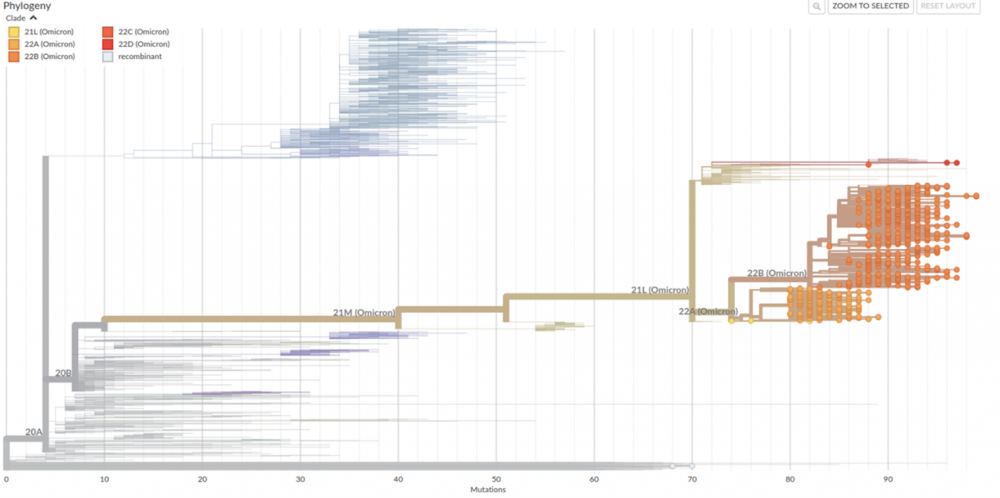
Figure Caption: Phylogeny tree of 742 SARS-CoV2 strains sequenced in September 2022, including two Omicron BA.2.75.2 subvariants in eastern North Carolina region.
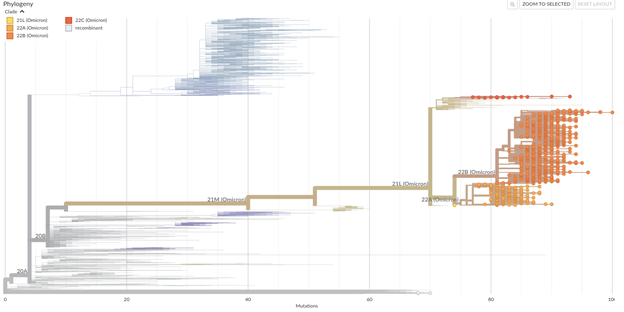 Figure Caption: Phylogeny tree of 957 SARS-CoV2 strains sequenced in August 2022, demonstrating the dominance of Omicron BA.4 and BA.5 variants in eastern North Carolina region.
Figure Caption: Phylogeny tree of 957 SARS-CoV2 strains sequenced in August 2022, demonstrating the dominance of Omicron BA.4 and BA.5 variants in eastern North Carolina region.
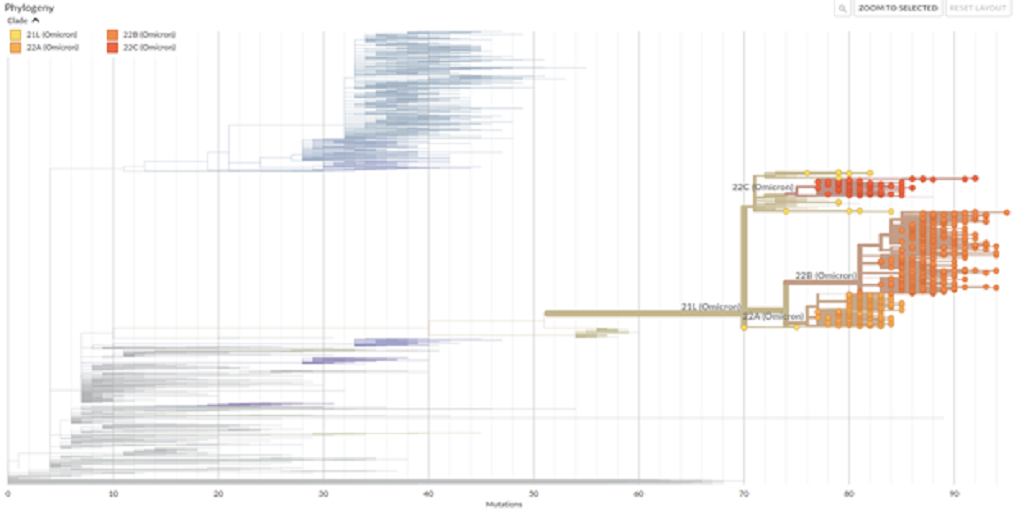
Figure Caption: Phylogeny tree of 755 SARS-CoV2 strains sequenced in July 2022, demonstrating the dominance of Omicron BA.4 and BA.5 variants in eastern North Carolina region.
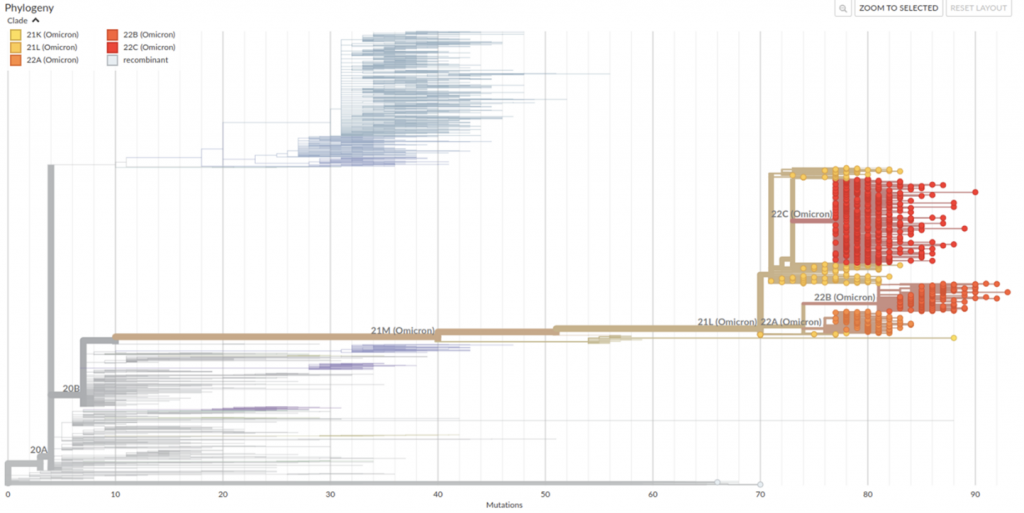
Figure Caption: Phylogeny tree of 951 SARS-CoV2 strains sequenced in June 2022, demonstrating the appearance and dominance of Omicron BA.4 and BA.5 variants in eastern North Carolina region.
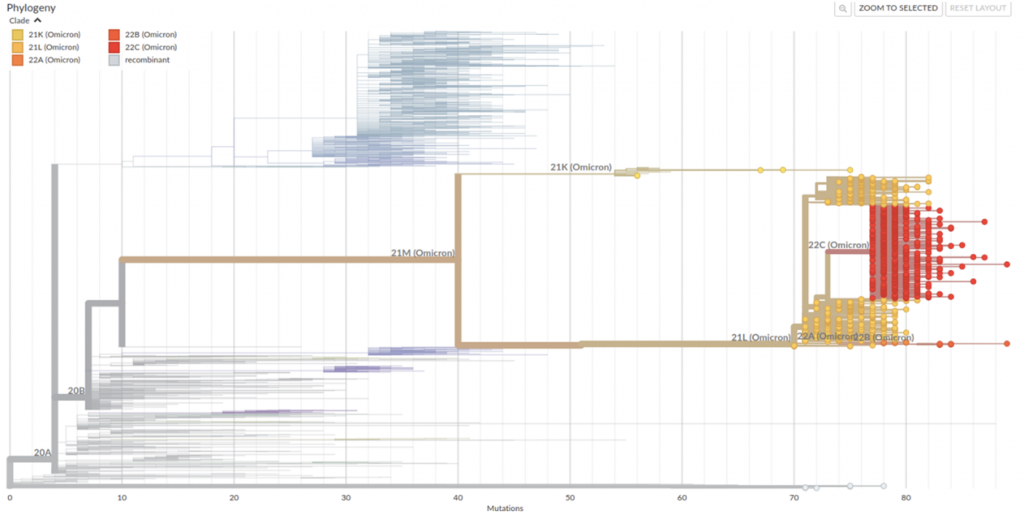
Figure Caption: Phylogeny tree of 1043 SARS-CoV2 strains sequenced in May 2022, demonstrating the dominance of Omicron BA.2 and appearance of new BA.4, BA.5 variants in eastern North Carolina region.
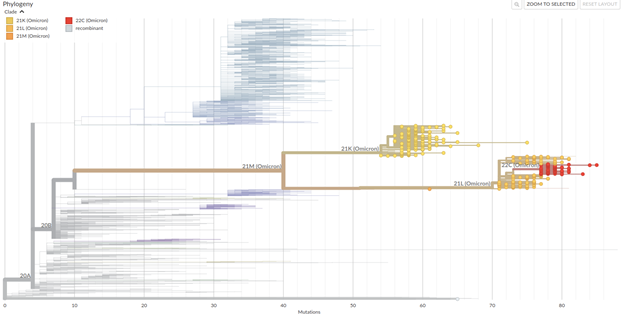
Figure Caption: Phylogeny tree of 425 SARS-CoV2 strains sequenced in April 2022, demonstrating the dominance of Omicron variant changing from BA.1 to BA.2 in eastern North Carolina region.
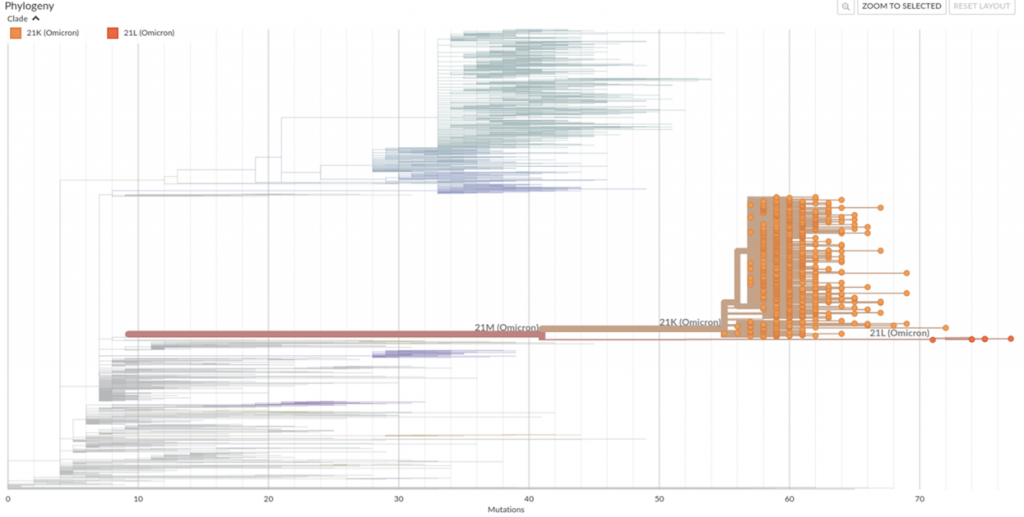
Figure Caption: Phylogeny tree of 882 SARS-CoV2 strains sequenced in March 2022, demonstrating the dominance of Omicron variants in the eastern North Carolina region.

Figure Caption: Phylogeny tree of 943 SARS-CoV2 strains sequenced in February 2022, demonstrating the dominance of Omicron variant in the eastern North Carolina region.
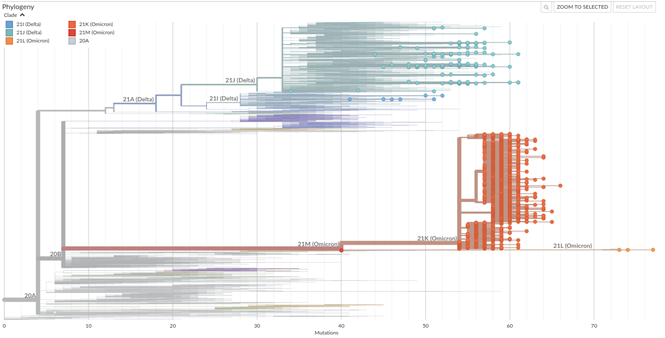
Figure Caption: Phylogeny tree of 1,713 SARS-CoV2 strains sequenced in January 2022, demonstrating the fast spreading and dominating of Omicron in eastern North Carolina with three BA.2 being detected.
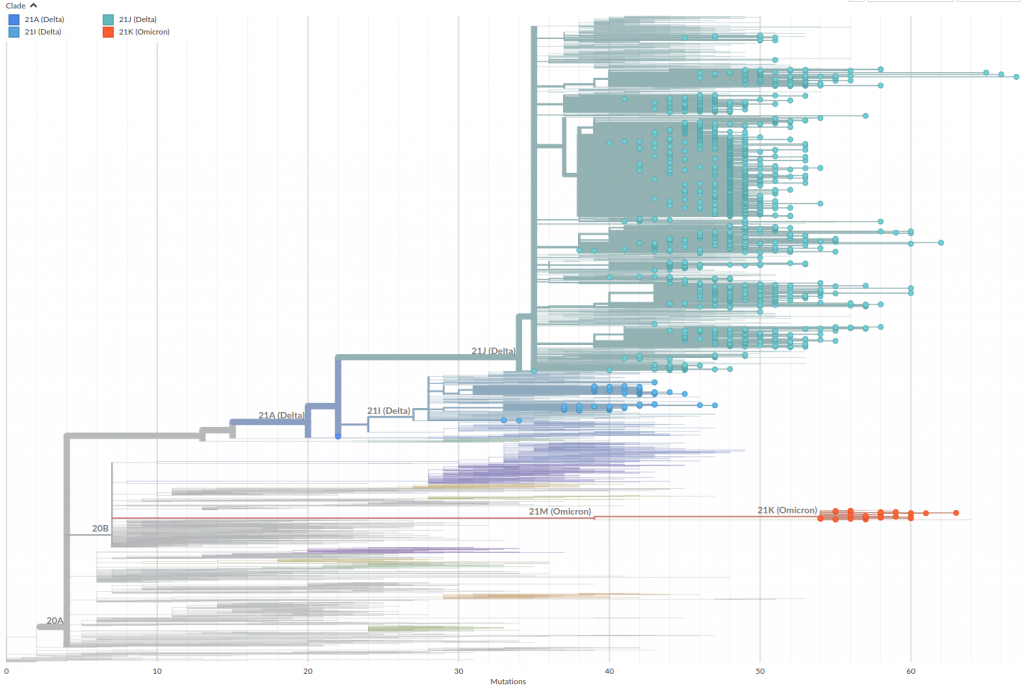
Figure Caption: Phylogeny tree of 1414 SARS-CoV2 strains sequenced in December 2021, demonstrating the appearance of Omicron variant in the eastern North Carolina region while Delta variant still being the dominant.
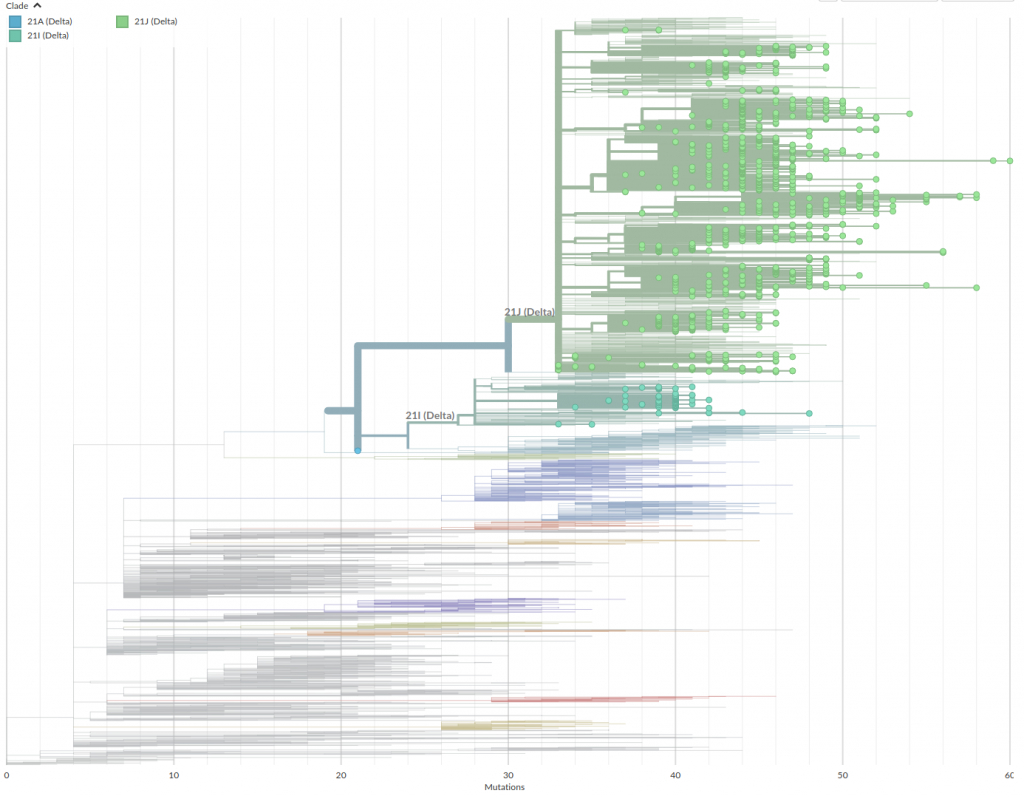
Figure Caption: Phylogeny tree of 1043 SARS-CoV2 strains sequenced in November 2021, 100% belonging to the Delta variant, with a pattern similar to those in September and October, 2021.
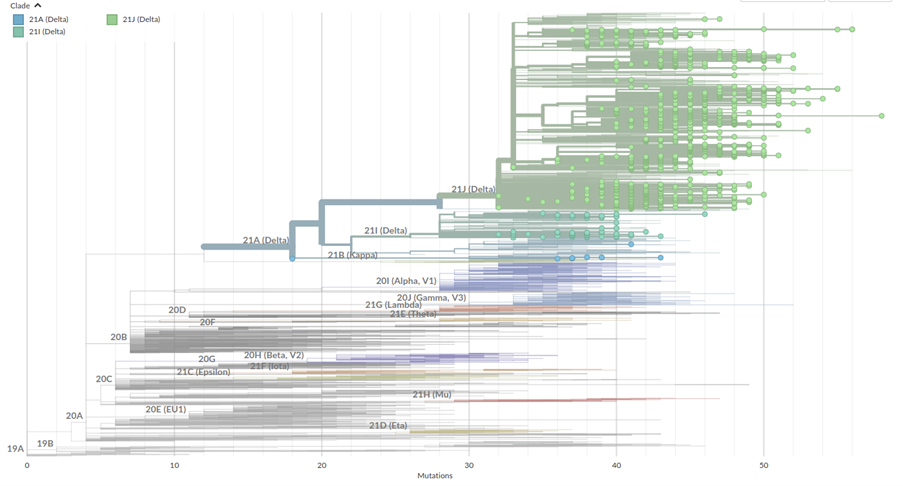
Figure Caption: Phylogeny tree of 1043 SARS-CoV2 strains sequenced in October 2021, 100% belonging to the Delta variant with a similar pattern as in September 2021.
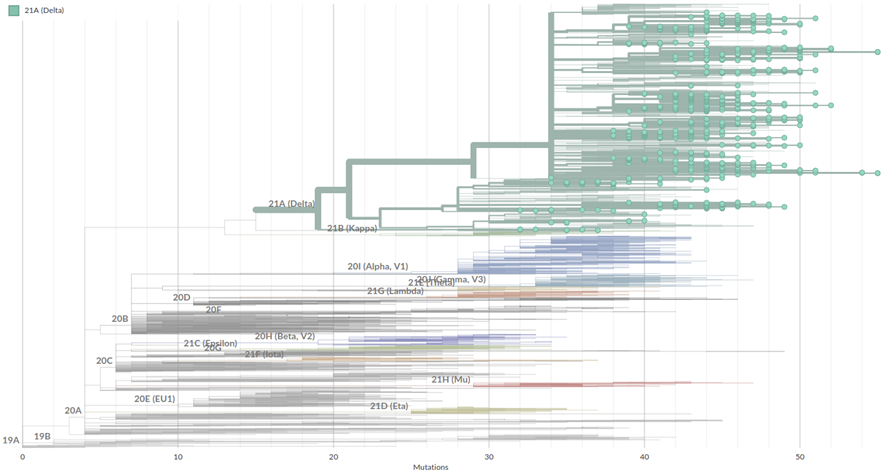
Figure Caption: Phylogeny tree of 661 SARS-CoV2 strains sequenced in September 2021, 100% belonging to the Delta variant.

Figure Caption: Phylogeny tree of 853 SARS-CoV2 strains sequenced in August 2021. Delta are the overwhelmingly dominating viruses circulating in the region.
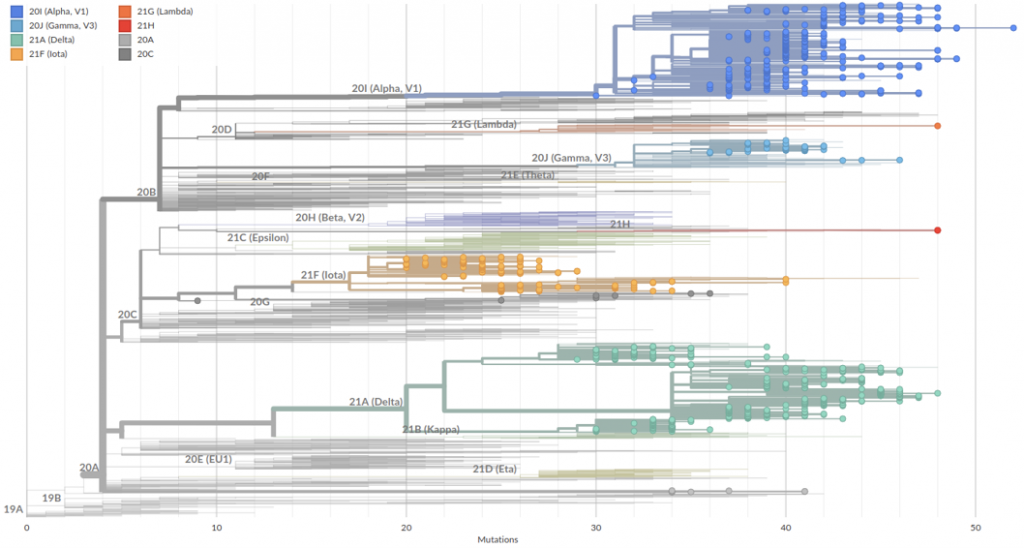
Figure Caption: Phylogeny tree of 944 SARS-CoV2 strains sequenced in July 2021. The dominating viruses were moving from Alpha (B.1.1.7) to Delta (B.1.617.2), with one Lambda (C.37) identified.